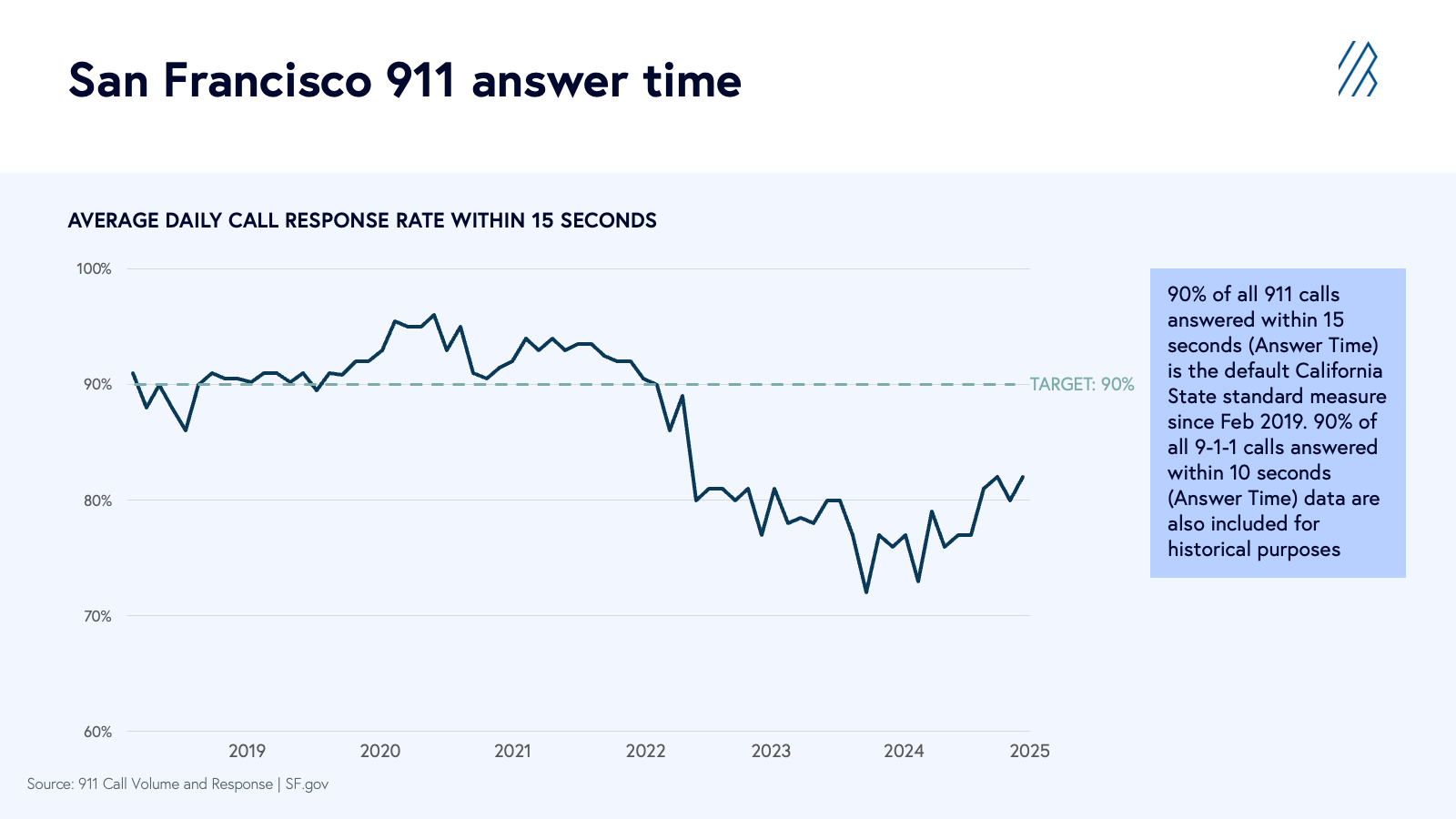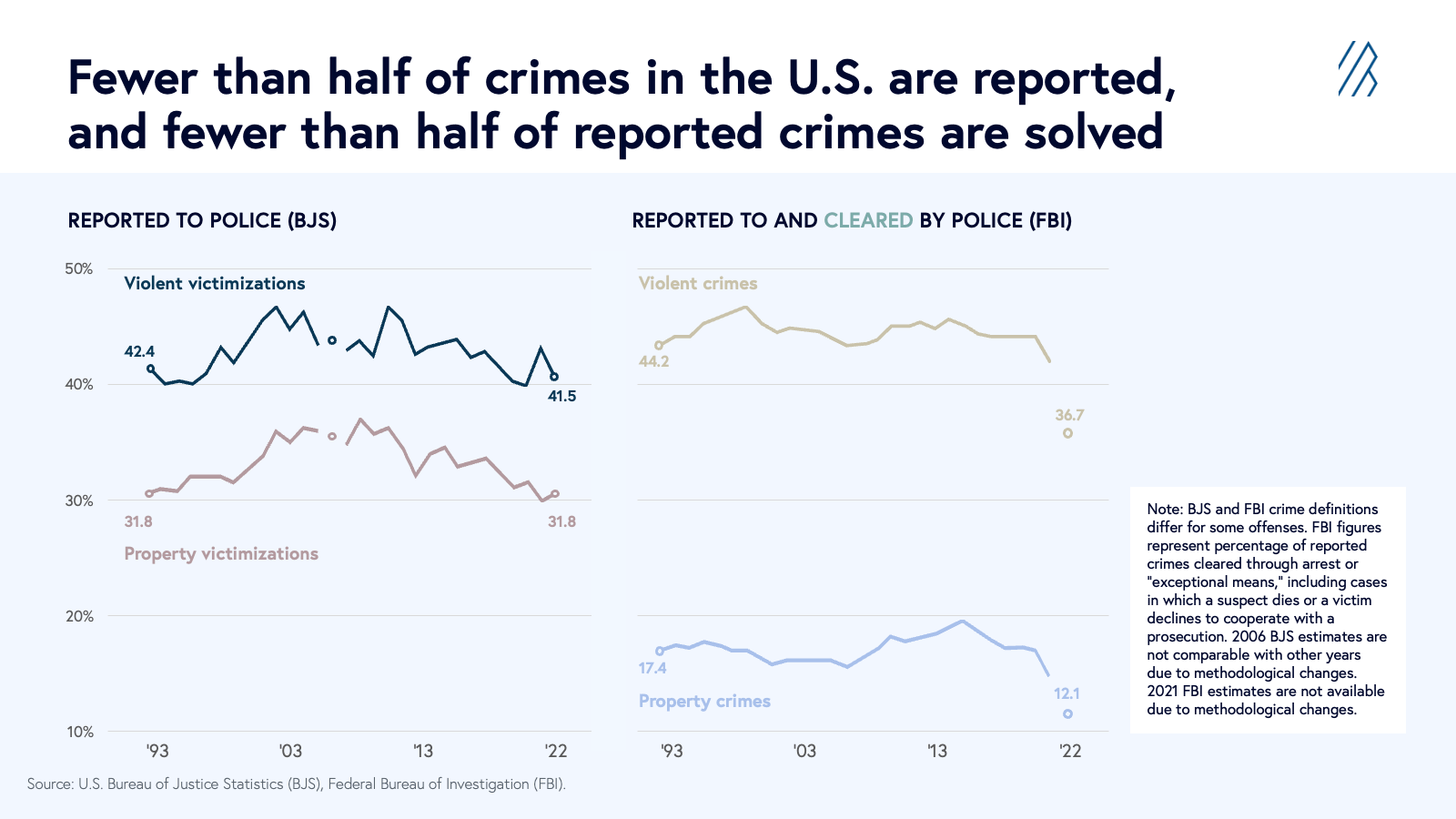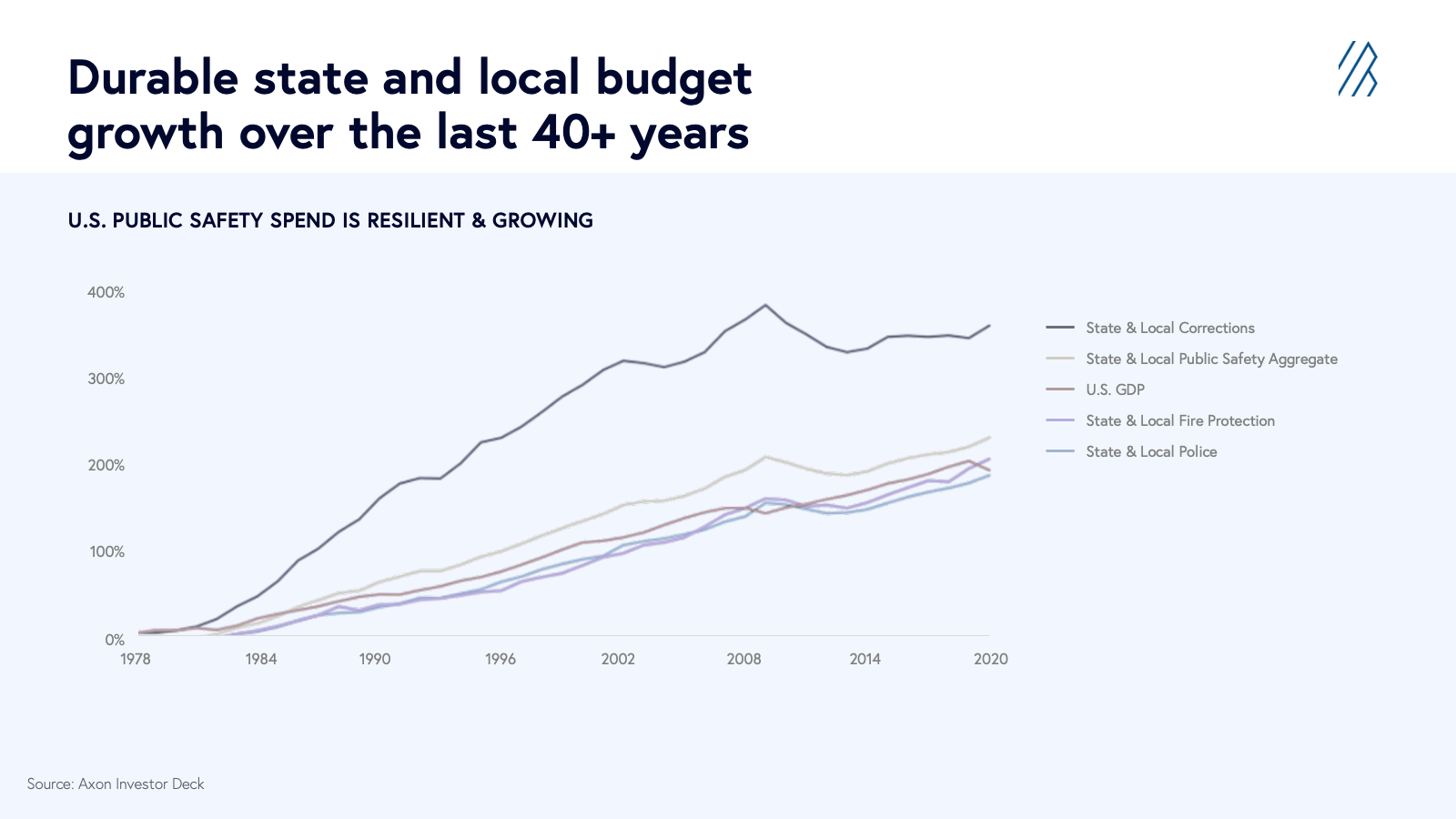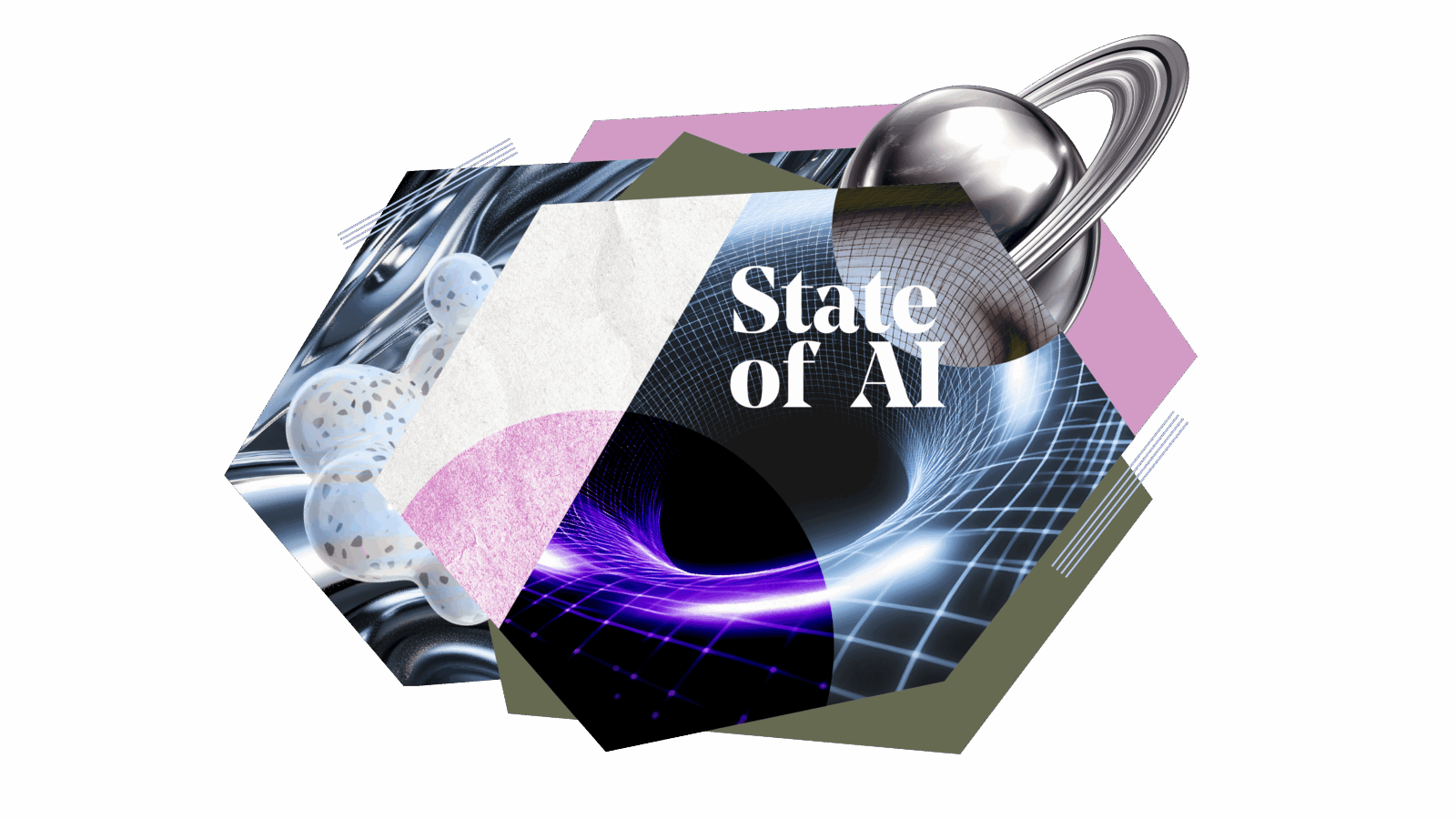Roadmap: Public Safety AI
From reactive to proactive: AI is shifting the dynamics of public safety from reacting to crime and climate threats to deterring them.
Each day brings new or recurring headlines about public safety crises — from catastrophic wildfires and retail theft rings to traffic fatalities and emergency response delays. Communities are seeking new ways to keep themselves safe from disastrous climate events and crime, but traditional public agencies are struggling with labor shortages and turnover. According to Axon, public safety is nearly a $130B opportunity, and now, thanks to advances in AI and cost reductions in cameras, drones, and other monitoring hardware, technology is not only filling the labor void but also shifting public safety from reactive to proactive.
It used to be that an incident would be reported and triaged after the fact. Now, an event is being flagged by AI in real time as it happens or even before it happens, and then deterred before it can occur or cause greater harm. AI’s ability to flag suspicious events, surface patterns, and identify threats before they happen means that the public is now being kept safe.
Key takeaways of public safety AI
- AI is transforming public safety: Moving from incident response to preemptive deterrence, AI can now detect and address threats like wildfires, crime, and traffic risks in real time or even proactively.
- Hardware and AI convergence: Affordable high-quality sensors and cameras have led to a massive surge in actionable, real-time data for public agencies, accelerating AI deployment in the sector.
- Labor shortages drive tech adoption: Emergency services and dispatch centers, pressured by post-pandemic workforce gaps, look to AI for efficiency, retention, and support, such as automated training and voice AI for non-urgent calls.
- Public expectations have evolved: Citizens now demand evidence-based, transparent, and responsive services akin to consumer experiences, fueling government tech adoption.
- Ethics and bias remain concerns: Responsible use, bias mitigation, and avoiding societal paranoia are key for positive public safety outcomes in AI deployment.
- Massive market opportunity: Public safety represents a durable, expanding vertical, with growth expected as AI and cloud transitions take hold, potentially yielding billion-dollar system-of-action platforms.
The perfect storm for AI adoption in public safety
The convergence of several powerful forces is creating a perfect storm for AI adoption in this sector. For starters, the dramatic reduction in hardware means that high-quality cameras, drones, and sensors that once cost tens of thousands of dollars are now more affordable. This, coupled with advancements in computer vision, makes hardware both cheaper and more powerful than ever. This hardware proliferation, in turn, has generated an explosion of real-time data — from license plate readers capturing millions of vehicle movements daily to remote cameras monitoring for wildfires around the clock. Traditional human-powered analysis simply cannot keep pace with this data deluge, and LLMs are perfectly equipped to synthesize and pattern-match vast data sets.
Secondly, the traditional public safety workforce is facing an unprecedented crisis. Post-pandemic labor shortages have hit emergency services particularly hard, with 911 dispatch centers reporting vacancy rates exceeding 25% in many metropolitan areas. Police departments are struggling with recruitment and retention, while firefighters face increasing call volumes due to climate-related incidents, but similarly struggle with staffing. With limited headcount to fight these community threats, agencies are looking for AI solutions to increase labor productivity and shift remaining headcount from lower-level administrative tasks to higher-value work.
Finally, and perhaps most importantly, public expectations have shifted. Citizens accustomed to real-time ride-share updates and instant package tracking now expect similar responsiveness from emergency services. They want transparency, accountability, and evidence-based decision-making from their public safety agencies. This consumer-grade expectation for government services is driving agencies to adopt technologies that can provide real-time insights and automated responses, and show proven results.
At Bessemer, we’ve long been investors in vertical software and increasingly in vertical AI. From Procore in construction and Shopify in e-commerce to our most recent IPO, ServiceTitan in the trades, we’ve learned a ton from backing category-defining vertical companies. We see a major opportunity for AI tools in public safety agencies and stakeholders. These AI solutions are proving to be indispensable in the fight for public safety, and we believe the next billion-dollar company will emerge from this paradigm shift in several areas.

Fire
The 2023 Maui wildfires and 2025 Southern California wildfires tragically brought fire safety to the forefront of American consciousness. With wildfires increasingly encroaching on urban and suburban areas, preventative home and community 'hardening' — whereby fire resistance measures are implemented — became top-of-mind for the US population. This is also particularly necessary given the rate at which insurers are pulling out of wildfire risk zones like Northern California.
This increasing pace of climate disasters and decreasing levels of coverage are shifting the conversations towards AI and technology that can be leveraged for fire prevention and disaster mitigation. Pano AI, for example, sells rapid smoke detection technology to utilities, insurers, and homeowner associations. Pano’s field cameras are installed in wildfire-prone areas and use AI in tandem with human oversight to detect smoke early and alert first responders, thereby averting potential wildfires. In a similar vein, FireDome, inspired by the Iron Dome in Israel, sells hardware and sensing solutions to detect spot fires, as well as fire mitigation capsules, which are launched at spot fires to suppress them.
Equipping the private sector won't solve the problem, though, and public sector institutions like fire departments and local governments are increasingly looking for solutions to empower them and enable better coordination. While Peregrine started in law enforcement, they have since expanded into fire and rescue, helping serve the 27,000+ fire departments in the US to monitor fire data, collaborate across departments, and conduct other proactive firefighting. Fire represents only one vector of catastrophic weather risk, with hail, hurricanes, and other extreme weather events increasing globally. We can expect to see more AI solutions emerge in response to keeping populations safe in the face of extreme weather events.
911 dispatch

If you’ve recently called 911 in a busy US city, you may have been met with a brief hold. San Francisco, for example, publishes their 911 hold times and, as shown, has been below their 15-second hold time target in recent years. Labor staffing shortages at 911 dispatch centers, coupled with increasing call volumes, are lengthening wait times and prompting cities to look for AI solutions. Companies like Prepared911 and RapidSOS are leveraging automation and technology to increase information availability and thus accelerate dispatcher workflows.
Despite these improvements in 911 dispatcher workflows, dispatch centers remain labor-constrained and struggle with staffing shortages and turnover. GovWorx uses AI to provide dispatchers with call coaching and automated training in an effort to more quickly train and better retain dispatchers, while Sharp Performance and Sworn AI are providing AI-enabled mental health and wellness solutions to support first responders and reduce turnover. Additionally, companies like Aurelian are using advancements in voice AI to automate non-emergency calls, thereby freeing up dispatchers to focus on the most pressing calls.
Traffic safety
In 2022, pedestrian deaths in the US reached their highest level in the last 40 years, with more than 7,500 pedestrians killed by a driver. Increased distracted driving, larger cars, and aging infrastructure all contribute to this trend of streets becoming less safe for pedestrians. As a result, communities are increasingly looking for solutions to help reverse this trend.
The reactive paradigm is speed cameras, which flag a high-speed car and issue a speeding ticket to the driver retroactively. In the new proactive paradigm, computer vision models are flagging speeding cars in real time and using AI to deter them by changing a traffic light or issuing drivers a warning on a billboard. Next-generation solutions like Obvio and Roundabout leverage recent advances in AI and edge computing to not only catch driving infractions, but also provide feedback to stop behavior in real time, whether through Obvio’s real-time sign alerts or Roundabout’s traffic light controls. Both companies aim to deter bad driver behavior as it happens and avert traffic incidents altogether, thereby making roads and pedestrians safer.
Law enforcement
Over the past several years, Real Time Crime Centers (RTCCs) have rapidly expanded across the United States, growing by 148% in just four years, with around 150 police agencies now operating these units. RTCCs serve as centralized hubs that leverage advanced technologies — such as surveillance cameras, license plate readers, drones, and gunshot detection systems — which have dramatically reduced in cost in recent years, providing law enforcement with affordable, actionable intelligence in real time. Surveillance cameras, automated license plate readers (ALPRs), and more have proliferated around cities, streaming live video and data into RTCCs. This has created unprecedented amounts of real-time data that public safety has to respond to, and social media is adding to this deluge. This vast new variety of data sources means that software and AI solutions are being embraced to help law enforcement sort through and make sense of this data.
Flock Safety was one of the first companies in this new wave, helping solve crime through ALPRs, which provide real-time alerts on stolen cars or other flagged vehicles. Shortly thereafter, we saw the rise of Drone as First Responder (DRF) programs like Aerodome and BRINC, which allow police to dispatch drones to the scene of an active crime to gather evidence, track suspects, and provide “eyes in the sky” for officers arriving at the scene.
Peregrine has grown rapidly, selling to state and local government as a unified data layer and analytics offering insights across this proliferating data. Similarly, Multitude Insights allows for information sharing across jurisdictions through its product, BLTN, and finds real-time patterns in data. Platforms like Truleo are leveraging AI to conduct field notes, assist with reporting, and more. There are countless ways AI is being applied to policing work, and as seen in Axon’s 2025 policing survey, law enforcement officers are eager for this wave of innovation.

Consumer
A 2024 New York resident survey found decreasing rates of feeling safe, with only 37% New Yorkers saying they felt safe in their neighborhoods, down from 50% in 2017. This echoes a broader US trend of heightened feelings of unsafety. And these feelings aren’t entirely unfounded; fewer than half of crimes in the US are reported, and less than half of those are solved.

People are not only looking to their governments and public safety agencies to keep them safe, but also to consumer products. Take Protector as an example — Nick Sarath was inspired to start Protector when he learned from public safety officers about the surge in off-duty work related to personal protection requests. Protector tapped into this pent-up demand for private security and plans to expand into a suite of other consumer protection offerings.
Similarly, next-generation home security devices are a ripe area for AI, given AI’s ability to autonomously monitor and alert properties. Ring was acquired by Amazon in 2018 and now works closely with Axon for public and private video doorbell data sharing. The next wave of AI home security companies, like Sauron, allow for facial recognition of guests, visitor tracking, and even proactive intruder deterrence. The next AI-native home security company likely to emerge from this wave will help prevent burglaries rather than just alert the authorities when they occur.
Additional applications in public safety AI
There are countless other proactive applications of AI in public safety, ranging from companies thwarting retail theft to drone deterrence to AI video surveillance like Bessemer’s portfolio company Spot AI, providing intelligent video monitoring and AI detection in enterprises. International markets also represent a massive opportunity for public safety AI and software, as crime, climate, and public safety are global issues. Public safety spending has seen durable secular growth over the last 40 years, and we expect accelerated growth to continue as AI propels it to new heights and new use cases.

The next billion-dollar public safety solution
Public safety is one of the largest vertical software markets and one of the last to move to the cloud and adopt AI. This past May, CEO of Tyler Technologies, H Lynn Moore, commented, “The market in public safety has been the last segment of our space to embrace the cloud, but now they have in a big way in recent years.”
With these tailwinds bringing innovation and urgency to the space, we expect to see AI-native billion-dollar businesses. We believe the solutions that thrive will be able to achieve the following:
- Deliver clear ROI to public safety agencies or consumers: Incumbents like Axon, Motorola, and others are heavily entrenched behemoths, and any new solution that replaces or sits alongside them will have to deliver a much more meaningful value proposition. Public safety budgets are limited, and consumer attention is fickle, so delivering a 10x better experience and creating real feelings of safety are key.
- Limited reliance on an established incumbent: Some new entrants are leveraging data streams from these incumbents, which creates a platform dependency and a natural ceiling to how big they can become. The next billion-dollar platforms will have limited dependency on established incumbents and will instead create their own proprietary data streams to build their businesses off of.
- Leverage a technological shift (e.g., AI, drones, robotics): Vertical SaaS winners like Procore and Toast leveraged the cloud transition to build big businesses, and we believe this platform shift with AI is an even more powerful catalyst. The “why now” around public safety is clear, and systems that don’t leverage AI advancements will be left behind as this cohort of magical new products takes share.
- Tackle a large and growing end market within public safety and become a core system-of-record: The next-gen public safety AI winners will start with an incredibly useful wedge product that buys them the right to expand into becoming the de facto system of record. Further, focusing on large and growing end markets like climate, where limited established incumbents exist, will also provide a clearer opportunity to make this transition from a helpful product to a system of record, or system of action.
Across countless forums, AI-enabled technology is spurring a new wave of solutions to enhance civilian safety. However, this increasing use of AI in certain areas of public safety does bring about ethical questions surrounding how these technologies can be used beneficially rather than cause more harm. Mitigating biases in AI and taking steps to avoid fanning the flames of citizen paranoia are key to leveraging advances in public safety AI for good rather than bad.
Used the right way, AI can be a powerful tool to keep communities safe. There’s a huge potential for the next generation of AI-native companies to protect people from the effects of climate change, crime, and more — and we look forward to backing these founders. If you’re a founder building in this space, we’d love to connect. To discuss opportunities, please reach out to Caty Rea (crea@bvp.com).





